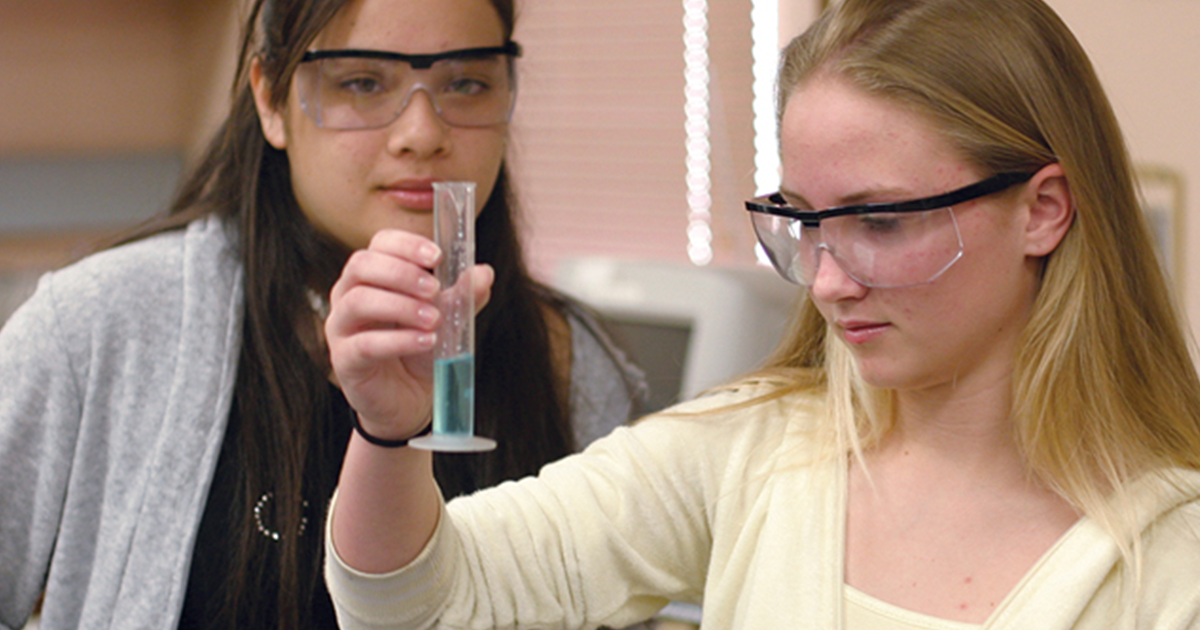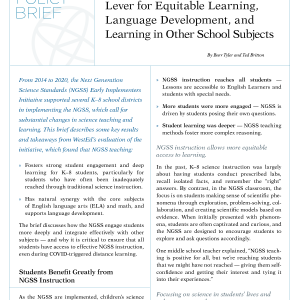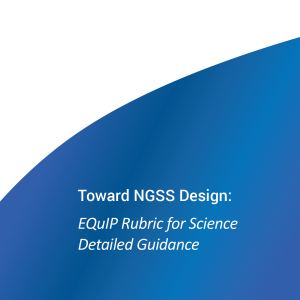ChemVLab+: Context-Based Instruction That Helps Students Think Like Chemists
Posted on

By Sierra McCormick and Jodi Davenport
Did you ever find yourself lost in a sea of formulas during chemistry class, wondering how all those isolated facts apply to the real world? Well, you’re not alone! In many traditional classrooms, instruction fails to connect the procedures of chemistry with underlying concepts and reasoning.
The Next Generation Science Standards (NGSS) offer an alternative, making science education more like an exciting puzzle. Teachers are encouraged to guide learning through real-world phenomena and give students the freedom to think, explore, and apply scientific reasoning.
Aligned with NGSS and funded by the U.S. Department of Education, the ChemVLab+ activities focus on what practicing chemists do: analyze and explain real-world events by connecting them to invisible processes at the molecular level. Read on or check out our study for more information.
What Is ChemVLab+?
ChemVLab+ is a collaboration between WestEd and David Yaron’s ChemCollective group at Carnegie Mellon University. The research team created a series of eight online activities to supplement high school chemistry instruction. These activities aren’t just about answering questions; they’re about getting students to ask the right ones.
ChemVLab+ grounds learning in real-world chemistry contexts, allowing students to connect problem-solving to their lives and develop important critical thinking skills. In the activities, students solve problems with immediate feedback and perform experiments in a virtual chemistry lab. Rather than emphasizing students’ ability to follow directions, the virtual chemistry lab allows students to experiment, make mistakes, learn, and try again—just like practicing scientists. The activities offer students the chance to develop reasoning skills that enable them to tackle new and more complex problems in the future.
These virtual lab activities are not meant to replace physical labs. Instead, ChemVLab+ offers an alternative to lectures, where many students sit passively; lab activities, where students follow step-by-step instruction with minimal understanding; and traditional pencil-and-paper exercises, where students lack immediate feedback.
Activity Snapshot: Testing for Contaminants in Drinking Water
Gravimetric analysis is a crucial tool in chemistry that helps determine the amount of a substance by measuring the mass of a solid from a chemical reaction. But how will students know when and how to use it?
In one ChemVLab+ activity, students learn that drinking water contains many salts and chemicals, some of which make water unsafe to drink in high amounts. The students are tasked with determining whether the concentration of a chemical is safe according to the Environmental Protection Agency’s guidelines.
Instead of giving students step-by-step instructions for carrying out gravimetric analysis right away, students first consider a simpler technique: letting the water evaporate and then weighing what’s left behind. Students quickly realize, with some guidance, that this approach fails to isolate the specific chemical they are interested in because other chemicals would remain after the water has evaporated.
Next, the students take a closer (submicroscopic) look at how two known chemicals can react to form a solid called a precipitate. They learn that this solid can be separated from the solution and then weighed using gravimetric analysis. As they progress through the activity, students organize the steps needed for this technique before they put it into action in the virtual chemistry lab. Rather than simply following a procedure to perform gravimetric analysis, students also learn why and when a chemist would select that approach.
Effectiveness of ChemVLab+
Giving students real-world problems to solve and teaching them, not just what chemists know, but also how they think, better prepares them to participate in chemistry beyond the classroom.
A recent study explored whether this context-based, exploratory approach helped students learn more chemistry concepts and skills. Classrooms of students were randomly assigned to use either the ChemVLab+ activities or other freely available online materials covering the same concepts.
ChemVLab+ students outperformed the other students, particularly on open-ended questions that focused on the reasoning behind experimental design. Students from underserved populations benefited similarly, if not more, from ChemVLab+.
ChemVLab+ brings a fresh approach to online learning. The activities give students a chance to dive into dynamic chemistry contexts, which makes learning more exciting and gets those critical thinking gears turning. Learn more about the design of ChemVLab+ and the results of the study.
Sierra McCormick served as a Learning & Technology Research Associate at WestEd. Jodi Davenport is a Senior Managing Director at WestEd and serves as Deputy Director of Regional Educational Lab (REL) Northwest.


